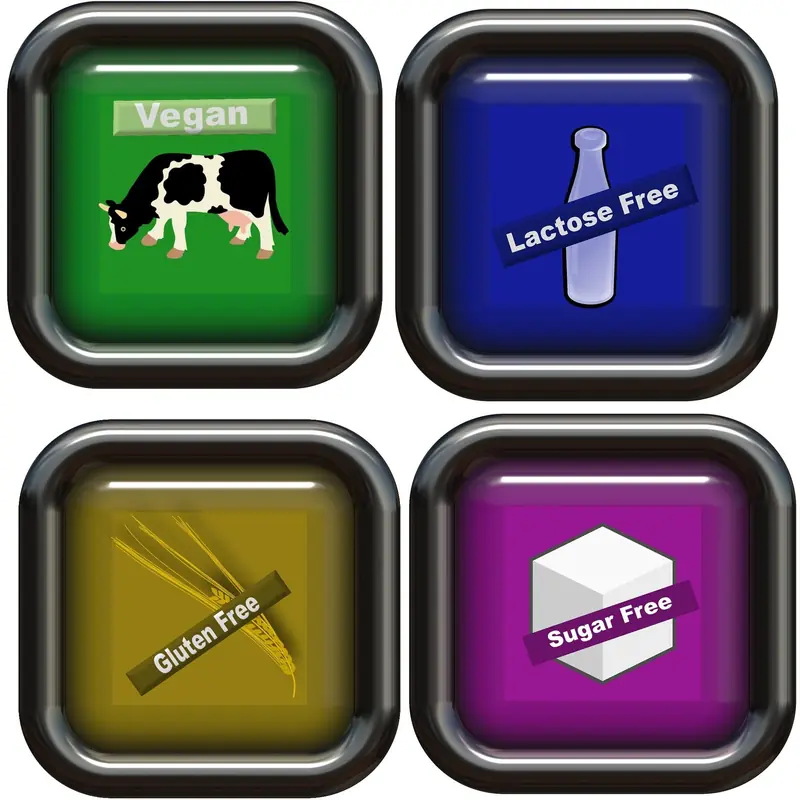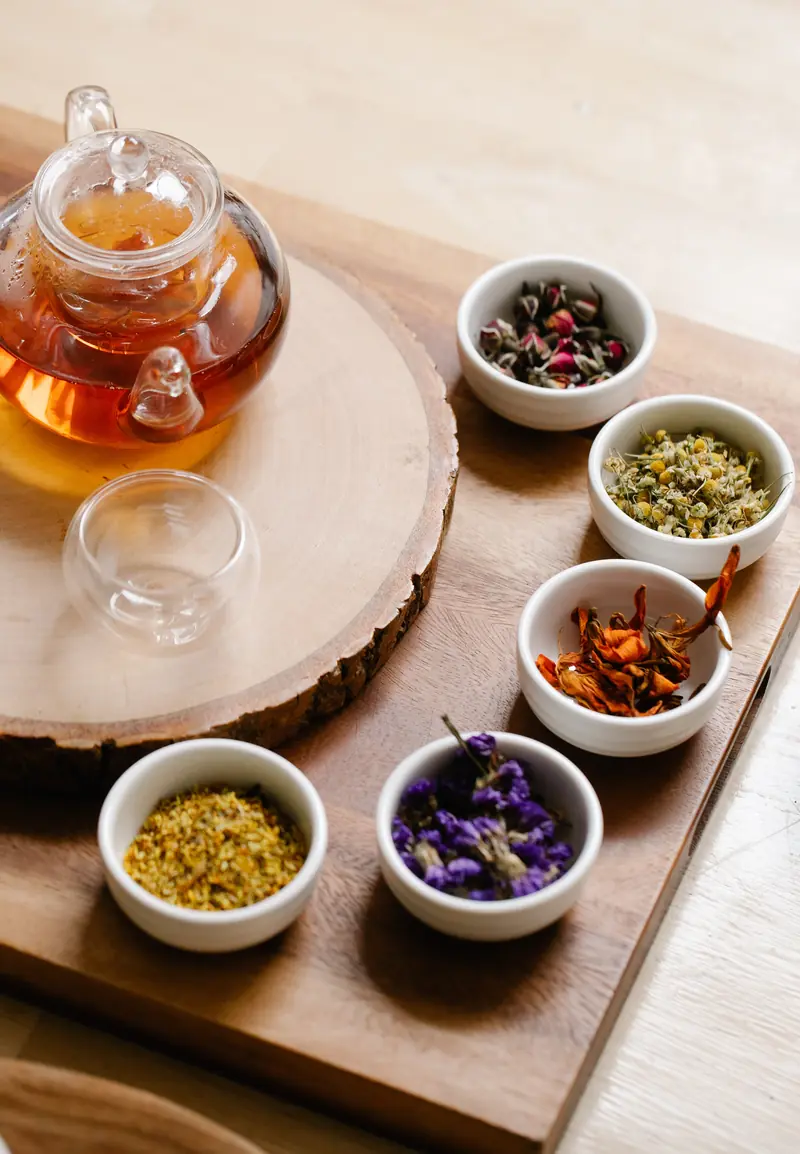
Allergies are the immune system’s response to substances that are typically harmless. These substances are known as allergens. A negative reaction occurs when the body perceives a threat and begins to “defend” itself.
Allergies are often viewed as a childhood ailment, but they can first appear at any age, including in your 20s or 40s. They are most commonly diagnosed in children, and from that point on, allergies can accompany a person throughout their life. In reality, this is an incurable condition, with symptoms arising as a result of exposure to specific allergens. The main goal is to reduce these symptoms without harming the body.
Today, specialists note a wide range of allergens that hinder people from living full lives. To treat allergies, various medications are developed. A crucial aspect of treatment is proper nutrition for those with allergies. A balanced diet can often significantly reduce the need for medication. When planning a diet for allergies, it is essential to eliminate the specific food that negatively affects the individual’s health. To identify this food, one must understand the causes of allergic reactions and determine the type of allergy.
Common and Unusual Forms of Allergies
According to WHO statistics, in developed countries, this condition affects one in five people. It is not viral, meaning it cannot be transmitted from person to person. However, diagnosing allergies can be quite challenging, as their symptoms can mimic those of other illnesses.
The most common form is food allergies, for which strict adherence to a diet is crucial. Another frequently encountered form is plant allergies, which are seasonal and occur only during the blooming of certain flowers and plants. Proper nutrition is equally important for managing seasonal allergies.
Dust allergies are particularly dangerous, specifically those caused by dust mites that thrive in household dust and produce large amounts of waste. Inhaling such dust exposes individuals to one of the strongest allergens. Allergies to pet dander, including that from cats and dogs living indoors, are also common.
We should not overlook the so-called unusual allergies, which are less common but still significant. These include sun allergies, characterized by heightened skin sensitivity to ultraviolet light, and electrical allergies, where individuals exhibit heightened sensitivity to electric fields. Those allergic to synthetic materials must wear only clothing and linens made from natural fabrics.
How can one choose the right foods in these cases? Specialists recommend keeping a food diary to track the effects of different foods on the body. This helps determine what can and cannot be eaten during allergy episodes.

Diet for Allergies – What Are Its Features?
During allergy flare-ups, it is advisable to thoroughly review your diet. Foods that are allowed should be of muted colors. Choosing suitable foods is only half the battle; the transition to this type of diet is equally important. An allergy diet should be introduced gradually, step by step:
- For the first 1-2 days, it is recommended to fast. Specialists suggest drinking at least 2 liters of room temperature water throughout the day. This prepares the body for the gradual introduction of foods from the therapeutic diet. It is essential to consult a doctor before starting a fast.
- On days 3-4, consume porridge made with water and vegetable soups without oil, butter, or frying. If no rashes appear on the skin, you can proceed to the next stage.
- On day 5, introduce lean meats and poultry, vegetables, and fruits that are suitable for your body, as well as medium-strength white and green tea, unsweetened crackers, and bagels.
The foods listed above should be consumed for at least 2-3 weeks. Only after this period can the diet be supplemented with allowed berries and fermented dairy products.
Initially, such a strict diet may seem quite challenging, and it truly requires willpower to adhere to it. However, it facilitates the cleansing of the body, which is crucial when dealing with this condition.
What Foods Are Prohibited for Allergies?
What foods are strictly forbidden for those with cross-reactive allergies? A diet for children with allergies to flowering plants excludes raw apples, carrots, peaches, peanuts, and hazelnuts. These foods contain proteins that are similar to those found in plants. To ensure the body functions normally during the flowering of trees and flowers, it is best to temporarily avoid these foods.
Those allergic to ragweed or wormwood should avoid celery, melons, cucumbers, bananas, and various spices. A one-week diet for those allergic to dust should exclude crabs, lobsters, and other seafood, as the proteins in these shellfish are similar to those of dust mites.
A diet for urticaria, which arises from contact with latex products, excludes bananas, kiwis, avocados, chestnuts, and bell peppers. This is because latex production involves substances containing rubber tree milk.
Additionally, it is important to note the following common allergens:
- Allergies frequently arise from consuming strawberries, eggs, fish and seafood, pineapples, carrots, chocolate and cocoa, citrus fruits, nuts, and honey.
- Less commonly, allergies can occur after eating cherries, beets, peaches, potatoes, corn, rabbit meat, pork, and beef.
- Very rarely, allergies may develop from pears and apples, green peas, cabbage, plums, and dried apricots.
Furthermore, individuals with allergies must avoid foods containing dyes, flavorings, preservatives, and emulsifiers.
A diet for allergy sufferers is not a whim but a necessity. Individual body characteristics dictate specific requirements, and often a balanced diet can only be tailored with the help of professional dietitians. However, each person must also monitor their own body, as no one can do this task better than they can.
What Foods Can Be Eaten with Allergies?
The list of prohibited foods for this condition is so extensive that many people may understandably wonder: what can I eat if I have allergies? First and foremost, it is recommended to consume dishes prepared by baking, boiling, or stewing with minimal oil. It is also important to know how to keep a food diary for allergies. All consumed foods should be recorded in a notebook, noting the times of lunch, breakfast, and dinner.
Generally, the following foods pose no harm to the body:
- Vegetables – cauliflower and Brussels sprouts, zucchini, pattypan squash, spinach, parsley, green salads, radishes;
- Meat – chicken, turkey, young rabbit, lamb, veal, offal;
- Fish (only lean varieties) – perch, cod;
- Fruits and berries (green and lightly colored) – white currants, white cherries, pears, gooseberries;
- Sweeteners – sugar, oat syrup;
- Grains – all grain products except wheat and couscous;
- Dairy products without additives – cheese, yogurt, fermented baked milk, kefir;
- Butter and olive and sunflower oils.
Children with allergies can also include dried fruits such as apples, pears, and prunes in their diet. For beverages, non-carbonated mineral water is recommended. Baked apples with added sugar and cottage cheese are very beneficial. A delicious hypoallergenic soup can be made with diluted milk, cauliflower, oats, quail eggs, and butter. For those who enjoy baking, a cake can be prepared using galette cookies, cottage cheese, fruit puree, and apples.

Diet for Drug Allergies
Drug allergies occur when a person reacts to certain medications or specific components within them. They can manifest in various ways, including local or clinical symptoms. This type of allergy is commonly triggered by antibiotics, particularly beta-lactams such as amoxicillin, cefazolin, streptocide, and penicillin.
The risk of developing this type of allergy increases with intramuscular and intravenous administration of medications. In contrast, oral intake rarely leads to allergic reactions. Symptoms can vary, including skin rashes, fever, mucosal swelling, and bronchial spasms.
A special diet for antibiotic allergies, prescribed by a doctor alongside antihistamines, can help alleviate symptoms. According to this diet, the intake of carbohydrates should be reduced, and foods with strong flavors—such as sour, sweet, salty, smoked, and various spices—should be avoided. It is advisable to drink plenty of soft, non-carbonated water while following this diet.
Diet for Urticaria
Urticaria is a type of allergy characterized by skin rashes and intense itching. This form can occur frequently or manifest as isolated incidents. Treatment typically involves avoiding allergens, taking medications, and following a diet. Why is a diet necessary? It helps reduce the impact of allergens, preventing an increase in overall symptoms. It is advisable to adhere to this diet for a period ranging from two weeks to one month. The diet for children under one year old with allergies consists solely of breast milk or hypoallergenic baby formulas. During this diet, new foods should not be introduced into the diet.
The diet for older children and adults with allergies includes the following foods:
- Boiled lean meat;
- Potatoes cooked in water;
- Gluten-free cereals and pasta;
- Soups made with water;
- Low-fat dairy products without additives;
- Steamed, boiled, and stewed vegetables;
- Greens and salads;
- Rye bread;
- Vegetable oils;
- Galette cookies.
This seasonal diet will help eliminate the impact of various allergens on the body. It is important to remember that food for allergies should be consumed in moderation, with small intervals between meals for better gastrointestinal function.
Homemade Antihistamine Recipes
To alleviate symptoms during allergic reactions, you can prepare some herbal and berry drinks.
- Steep 1 teaspoon of dried chamomile flowers in 200 ml of boiling water. After cooling, drink 1 tablespoon several times a day.
- Steep viburnum flowers and dried plantain in boiling water at a ratio of 2 teaspoons of herbs to 250 ml of water. Strain the infusion, cool it, divide it into portions, and drink throughout the day in three doses.
- Prepare an infusion of dried nettle – 1 tablespoon of crushed herb in a glass of boiling water. Consume throughout the day in several doses.
Allergies are not life-threatening, but they can significantly diminish a person’s quality of life for many years. If you have already fallen victim to them, you will need to find ways to coexist with them, and proper nutrition is one component of this “symbiosis.”

